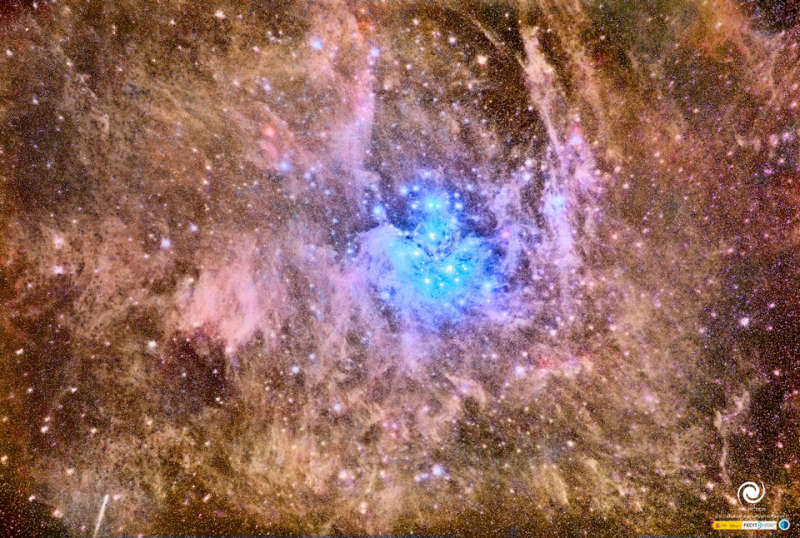Credit & Copyright: Juan Carlos Casado
(TWAN,
Earth & Stars),
Miquel Serra-Ricart & Daniel Padron,
FECYT
Explanation:
The well-known Pleiades star cluster is slowly destroying part of a passing cloud
of
gas and dust.
The Pleiades
is the brightest
open cluster of stars
on Earth's sky and
can be seen from almost any northerly location with the
unaided eye.
The passing young dust cloud is thought to be part of
Gould's Belt, an
unusual ring of young star formation surrounding the Sun in the
local Milky Way Galaxy.
Over the past 100,000 years, part of
Gould's Belt
is by chance moving right through the older
Pleiades and is causing
a strong reaction between
stars and dust.
Pressure from the stars' light significantly repels
the dust in the surrounding blue
reflection nebula, with
smaller dust particles being repelled more strongly.
A short-term result is that parts of the dust cloud have become
filamentary and
stratified.
The featured deep image also captured
Comet C/2015 ER61
(PanSTARRS) on the lower left.
1999 2000 2001 2002 2003 2004 2005 2006 2007 2008 2009 2010 2011 2012 2013 2014 2015 2016 2017 2018 2019 2020 2021 2022 2023 2024 2025 |
Январь Февраль Март Апрель Май Июнь Июль Август Сентябрь Октябрь Ноябрь Декабрь |
NASA Web Site Statements, Warnings, and Disclaimers
NASA Official: Jay Norris. Specific rights apply.
A service of: LHEA at NASA / GSFC
& Michigan Tech. U.
|
Публикации с ключевыми словами:
pleiades - star cluster - dust - Плеяды - отражательные туманности - пыль
Публикации со словами: pleiades - star cluster - dust - Плеяды - отражательные туманности - пыль | |
См. также:
Все публикации на ту же тему >> | |
